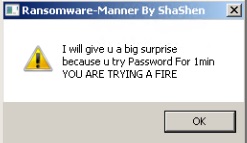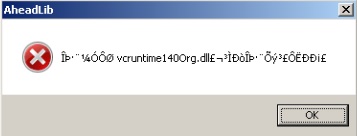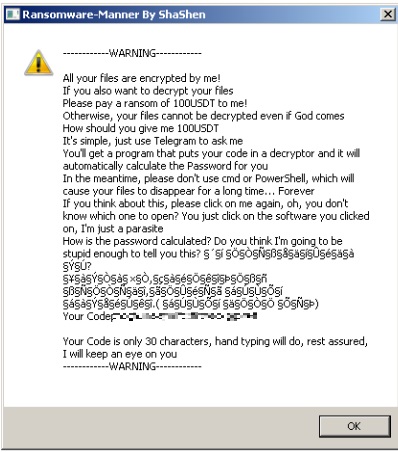Ransom.Win32.LCRY.A
UDS:Trojan-Ransom.Win32.Encoder.uim (KASPERSKY)
Windows


Threat Type: Ransomware
Destructiveness: No
Encrypted: No
In the wild: Yes
OVERVIEW
This Ransomware arrives on a system as a file dropped by other malware or as a file downloaded unknowingly by users when visiting malicious sites.
It avoids encrypting files with the following file extensions.
TECHNICAL DETAILS
Arrival Details
This Ransomware arrives on a system as a file dropped by other malware or as a file downloaded unknowingly by users when visiting malicious sites.
Installation
This Ransomware drops the following files:
- %Windows%\system32lrk.dat
- %Windows%\system32lri.dat
- {Malware File Path}\Code.key ← decoy decryption key
- %Desktop%\@Decryptor@.exe ← Copy of application that loaded the malware file
- %Windows%\system32lrw.bmp
- {Malware File Path}\PasswordEnter.txt
(Note: %Windows% is the Windows folder, where it usually is C:\Windows on all Windows operating system versions.. %Desktop% is the current user's desktop, which is usually C:\Documents and Settings\{User Name}\Desktop on Windows 2000(32-bit), XP, and Server 2003(32-bit), or C:\Users\{user name}\Desktop on Windows Vista, 7, 8, 8.1, 2008(64-bit), 2012(64-bit) and 10(64-bit).)
Other System Modifications
This Ransomware sets the system's desktop wallpaper to the following image:
- %Windows%\system32lrw.bmp

Other Details
This Ransomware does the following:
- It encrypts all available logical drives from A -Z.
- If the drive being encrypted is C drive it only encrypts the %Desktop% and %User Profile%\Documents folders.
- It checks if system32lrk.dat and system32lri.dat exists in the affected machine's %Windows% folder.
- If it exists, it opens {Malware File Path}\PasswordEnter.txt and asks the user to enter a key on the file for 60 seconds.
- If the correct key is entered within 60 seconds, it decrypts its encrypted files then restart the affected machine.
- If not, it shows the following message box then restart the affected machine.

- If it does not exist, it encrypts the files in the affected machine.
- It attempts to load the file 'vcruntime140Org.dll'
- If the file is not loaded, it displays the following message box:

- If the file is not loaded, it displays the following message box:
- It displays its ransom note after encryption through a message box:

Ransomware Routine
This Ransomware appends the following extension to the file name of the encrypted files:
- {Existing File Extension}_lcry_enc
It avoids encrypting files with the following file extensions:
- {Existing File Extension}_lcry_enc
SOLUTION
Step 1
Trend Micro Predictive Machine Learning detects and blocks malware at the first sign of its existence, before it executes on your system. When enabled, your Trend Micro product detects this malware under the following machine learning name:
- TROJ.Win32.TRX.XXPE50FFF071
Step 2
Before doing any scans, Windows 7, Windows 8, Windows 8.1, and Windows 10 users must disable System Restore to allow full scanning of their computers.
Step 3
Note that not all files, folders, and registry keys and entries are installed on your computer during this malware's/spyware's/grayware's execution. This may be due to incomplete installation or other operating system conditions. If you do not find the same files/folders/registry information, please proceed to the next step.
Step 4
Search and delete these files
- %Windows%\system32lrk.dat
- %Windows%\system32lri.dat
- {Malware File Path}\Code.key
- %Desktop%\@Decryptor@.exe
- %Windows%\system32lrw.bmp
- {Malware File Path}\PasswordEnter.txt
Step 5
Scan your computer with your Trend Micro product to delete files detected as Ransom.Win32.LCRY.A. If the detected files have already been cleaned, deleted, or quarantined by your Trend Micro product, no further step is required. You may opt to simply delete the quarantined files. Please check the following Trend Micro Support pages for more information:
Step 6
Restore encrypted files from backup.
Step 7
Reset your Desktop properties
Did this description help? Tell us how we did.


